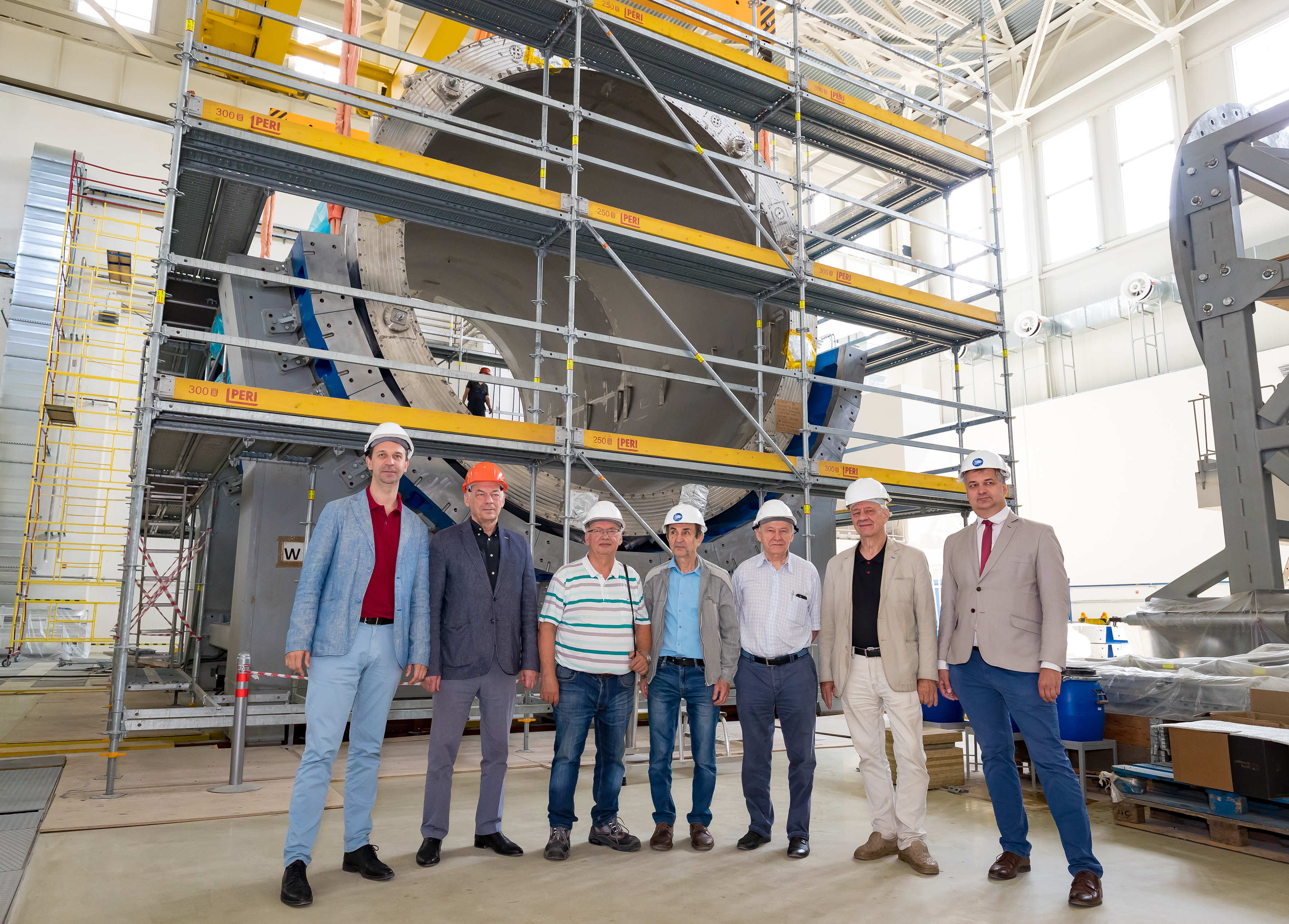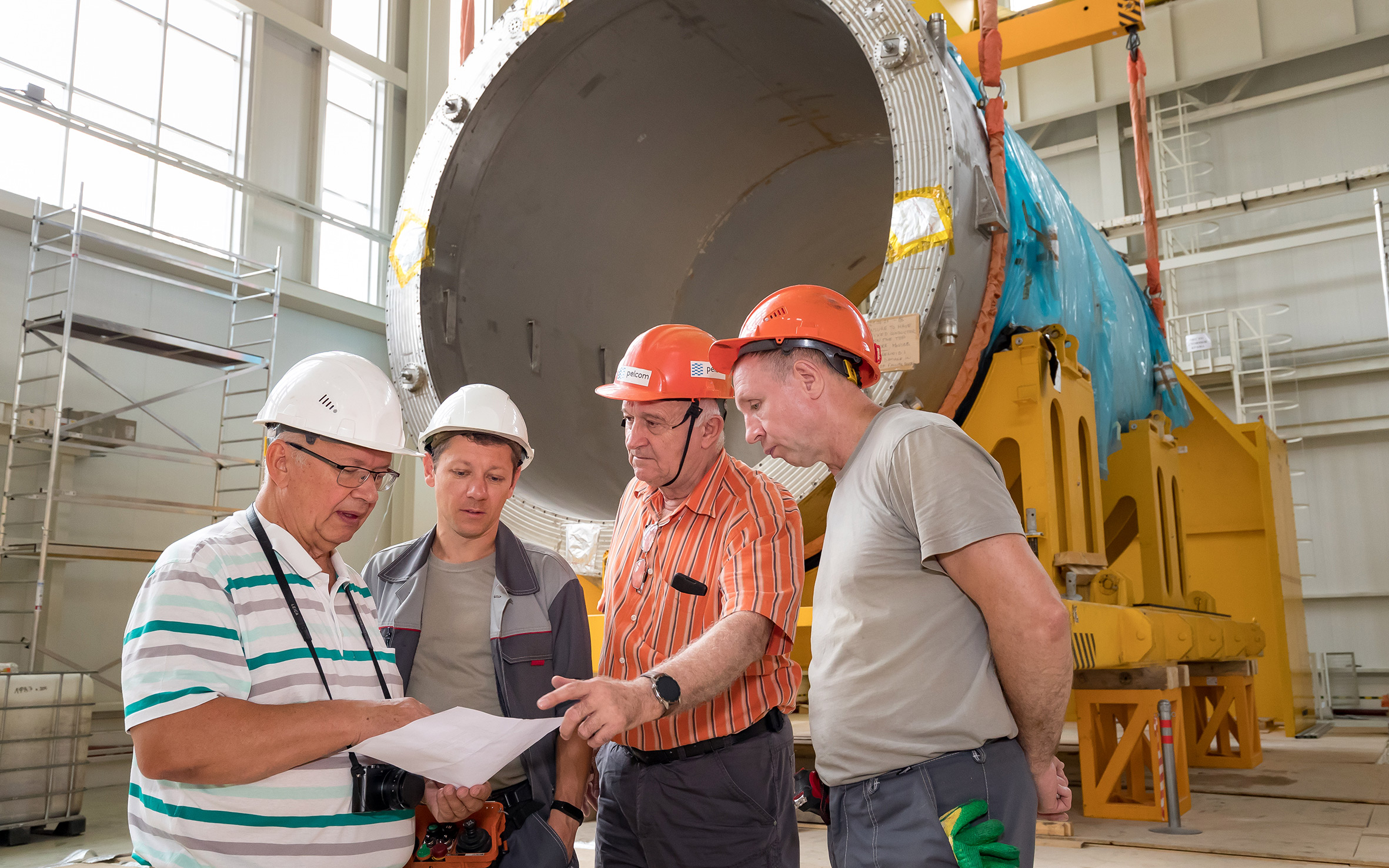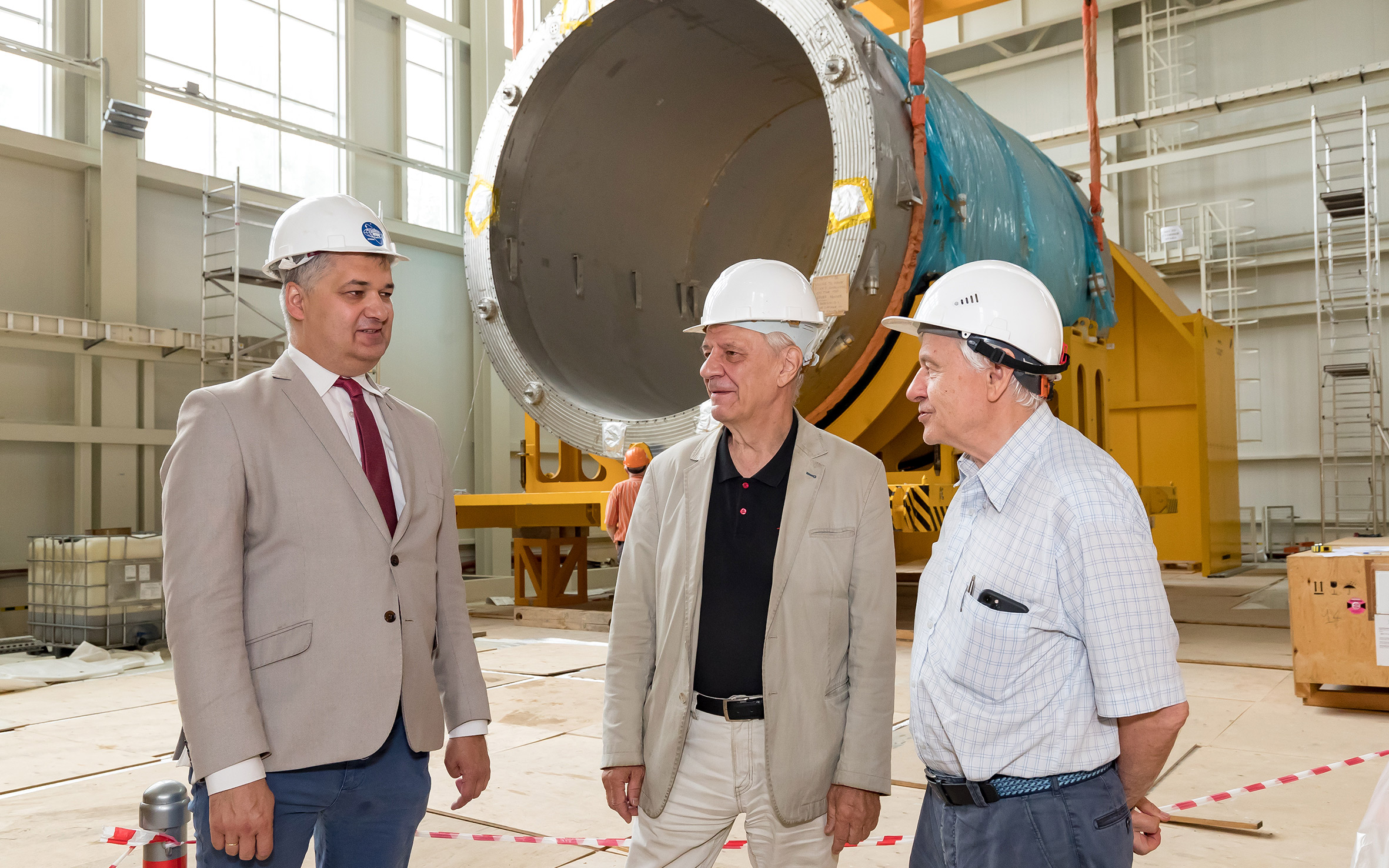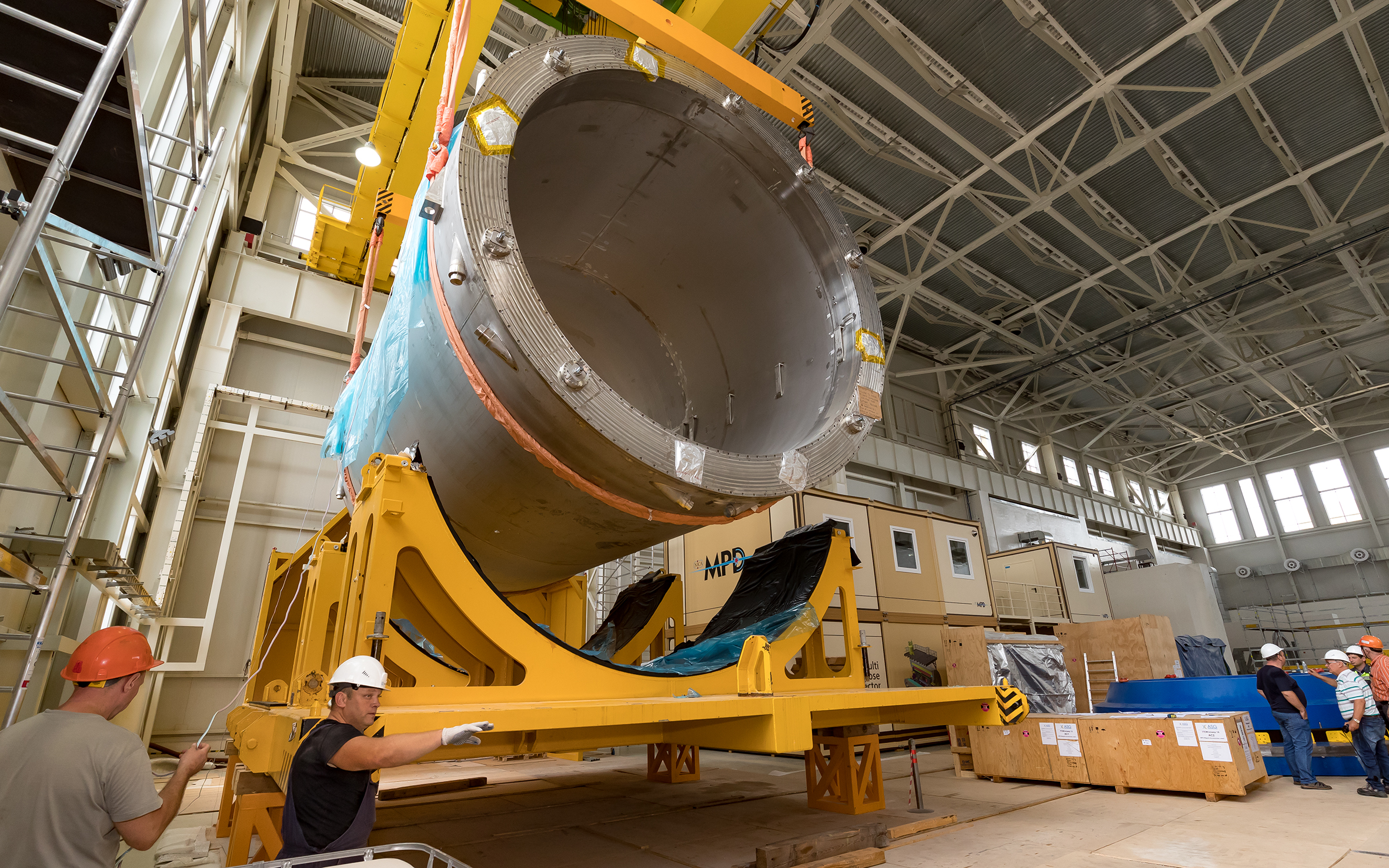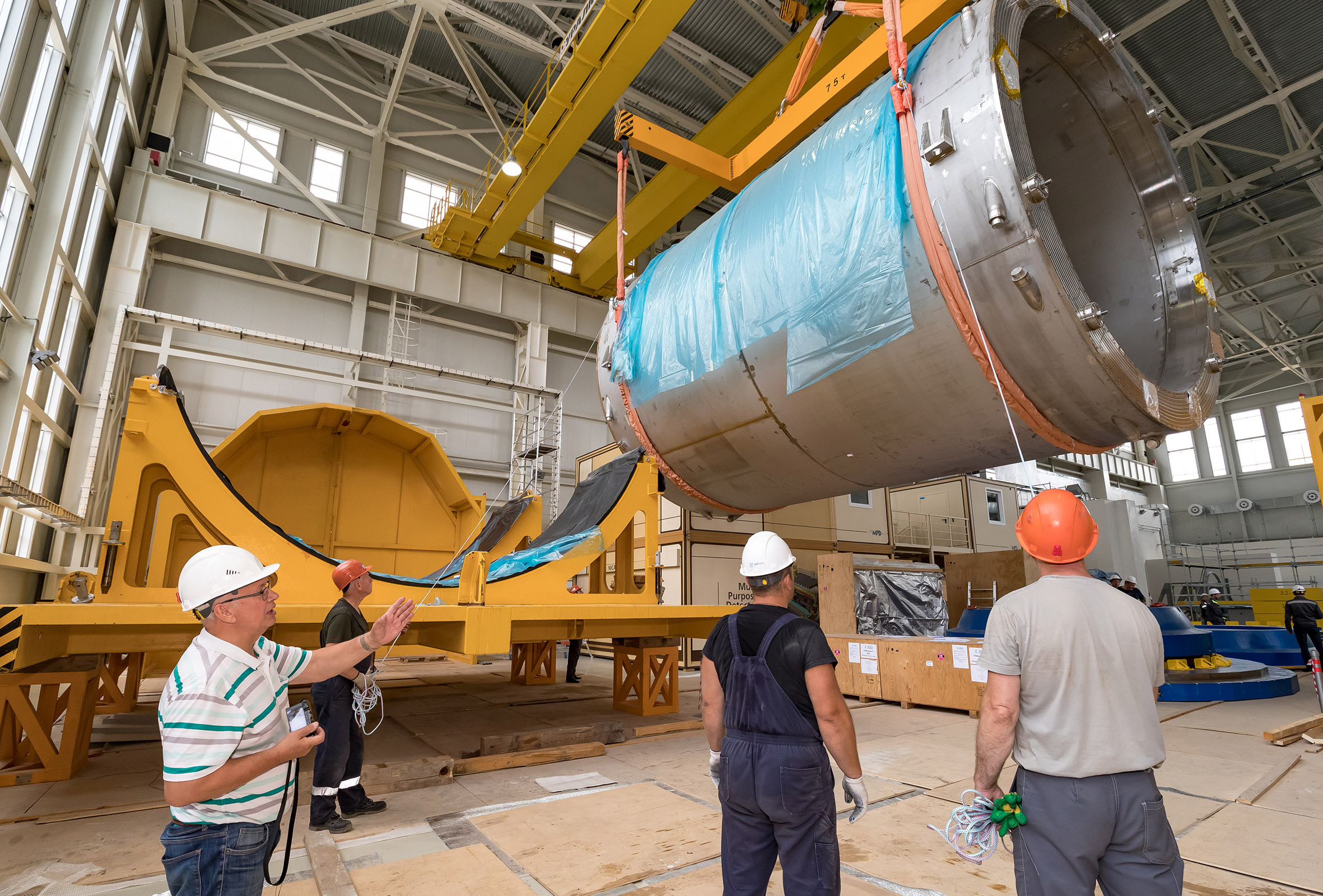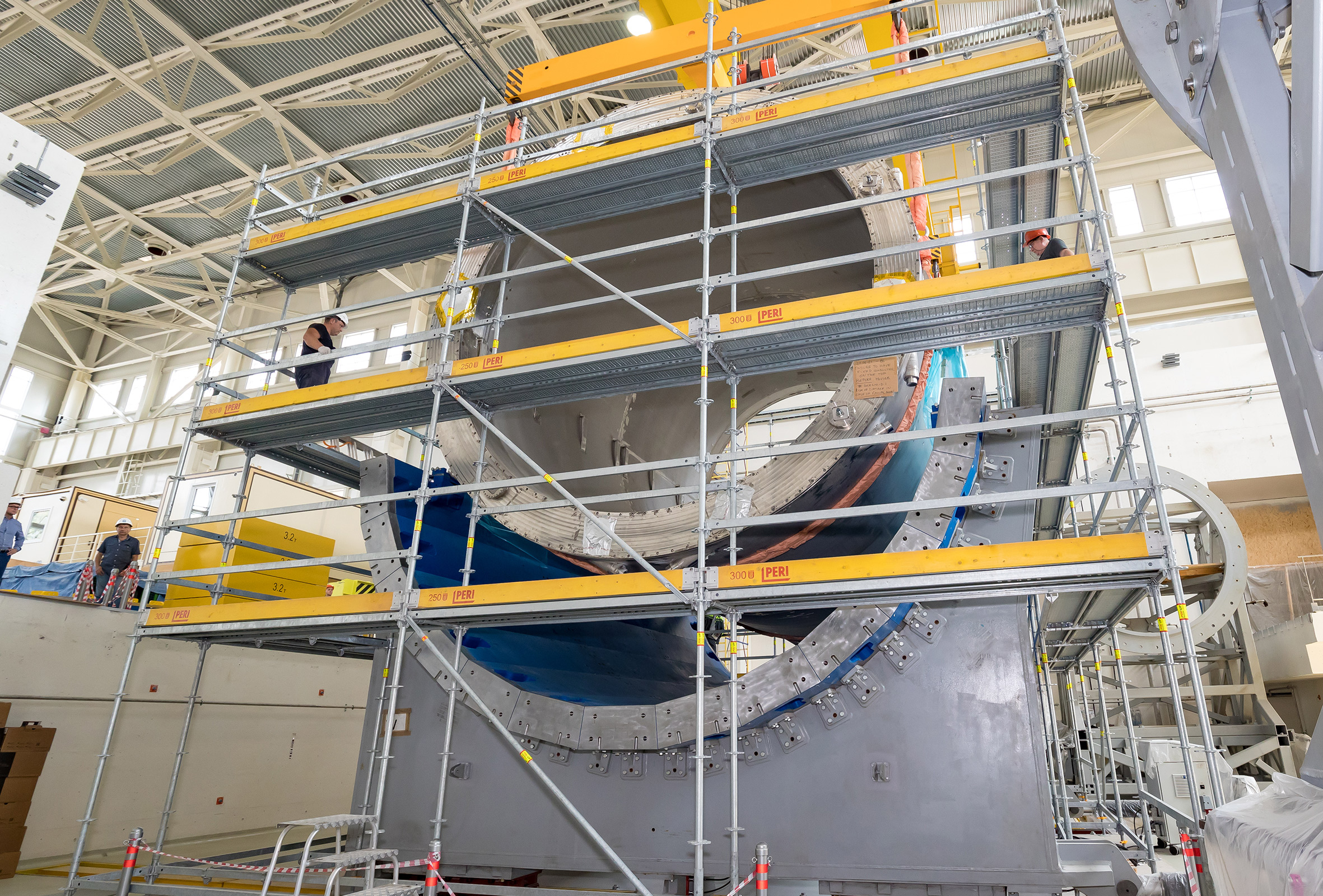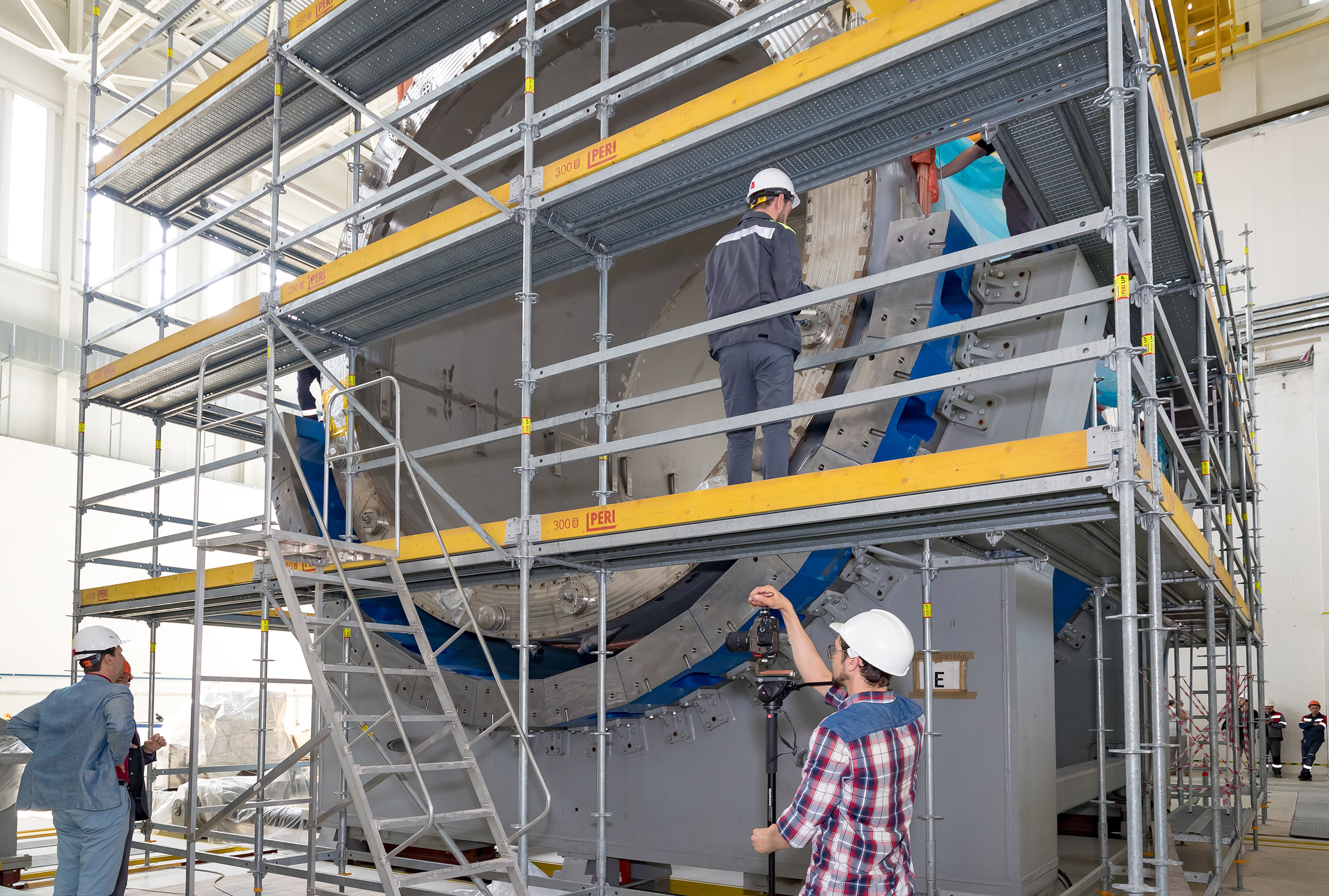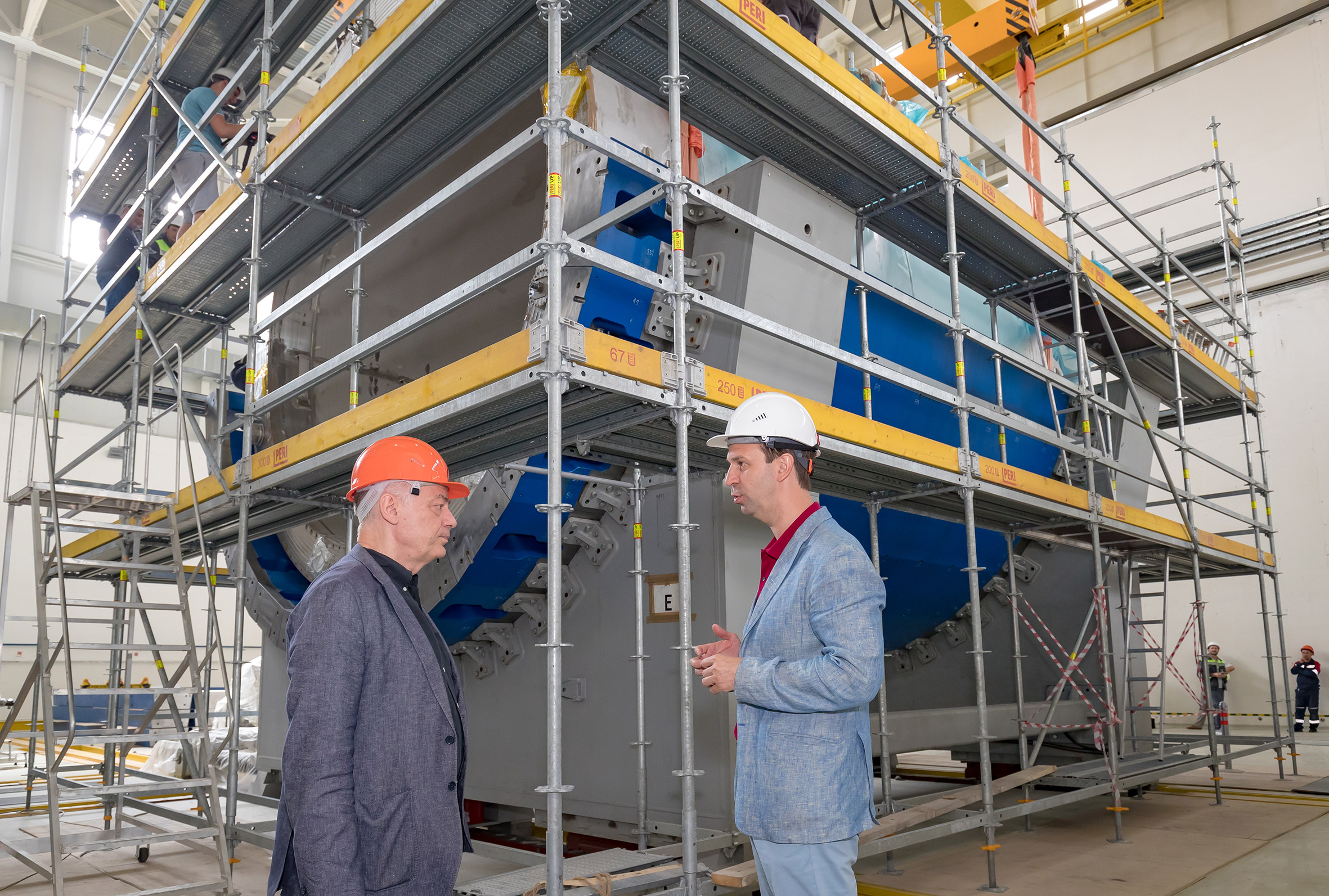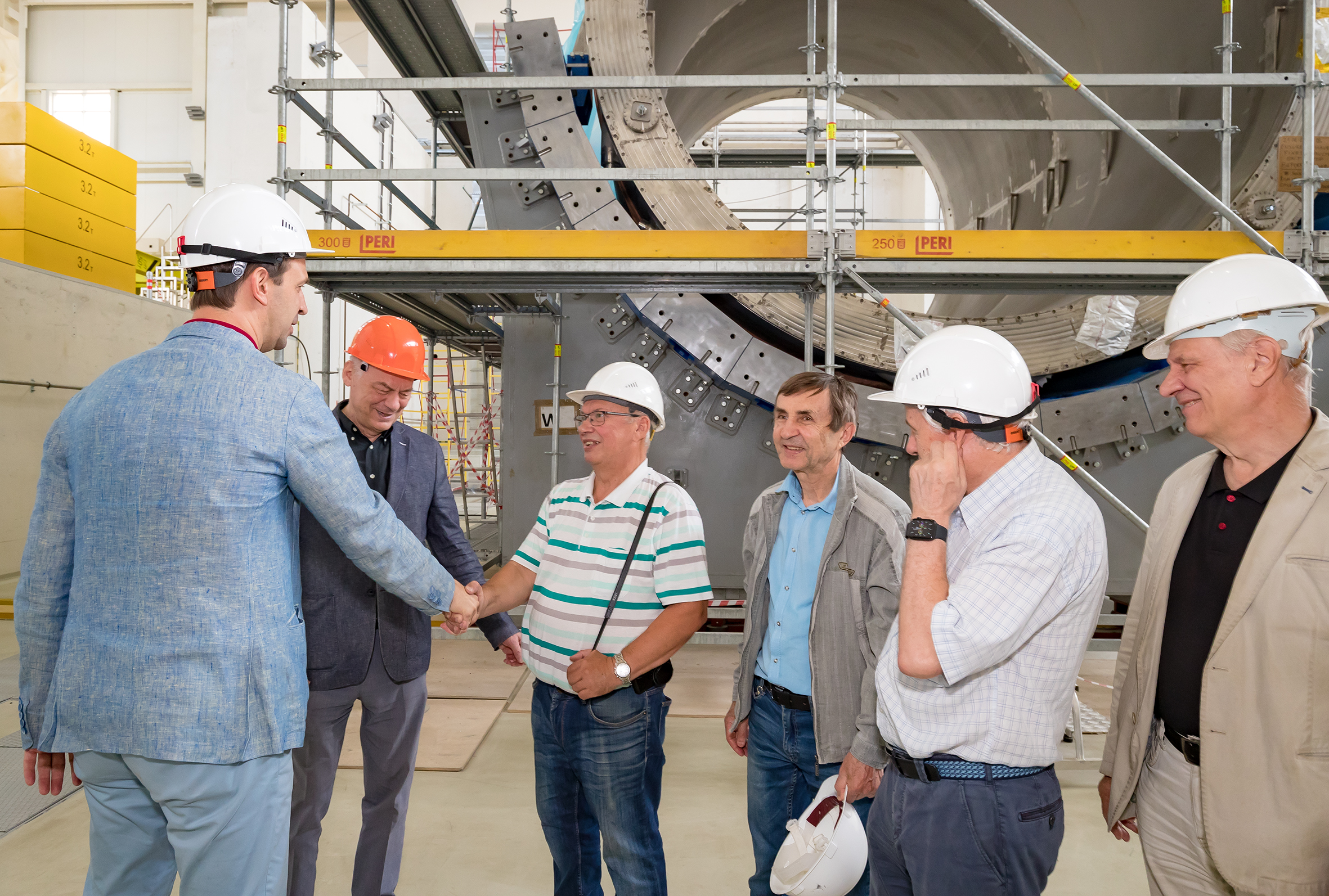Off we go! 70-ton solenoid moved to yoke of MPD at NICA collider
News, 29 July 2021
The operation to move the heaviest object of the detector took place today, 29 July. Installation of the superconducting solenoid launches the major stage in the MPD detector creation at the NICA accelerator complex.
The assembly of the MPD detector started in July 2020 when the iron yoke of the MPD magnet was installed at the first stage. In December 2020, the magnet yoke was assembled and ready for integration with the superconducting solenoid. Its sarcophagus arrived by water to Dubna from Italy in November 2020.
“The assembly of the magnetic and cryostat system of the MPD detector is a significant stage in the implementation of the NICA project. The cryostat is a complex superconducting helium cryogenic system. It took five years to create and design it. Our partners from Italy – the ASG superconductors company – manufactured the cryostat, and then it made a long journey from Genoa to Dubna. The lodgement and elements of the magnet yoke were produced by our colleagues from Slovakia, the Czech Republic, Ukraine, and Russia, of course. Today, we have installed the cryostat in its designed position. The final assembly of the whole yoke will take 2-3 weeks,” JINR Director RAS Academician Grigory Trubnikov commented on the event.
After that, it is planned to start the first “cold” tests in September-October.
Deputy Chief Engineer of the Laboratory of High Energy Physics JINR, Chief Designer of the NICA/MPD project Nikolay Topilin shared some details of the operation and further plans, “This is a unique operation within the assembly of the whole MPD detector since today we have installed the heaviest object. Its weight is 70 tons, and taking into account the traverse, we have approached the maximum possible values for the crane. But everything went smoothly, and everyone worked just fine. The next stage is testing the cryostat and the solenoid. We will measure the position of the cold mass, the position of the cryostat relative to the magnet core, and if necessary, adjustments to their position will be made.”
The experimental facility MPD (Multi-Purpose Detector) aims to analyse collisions of heavy ions in a previously unexplored area of large baryonic densities. It will be placed in one of the two collision points of beams at the NICA collider being created at the Joint Institute for Nuclear Research within the national project of the Russian Federation “Science and Universities”.
Photos by Elena Puzynina
